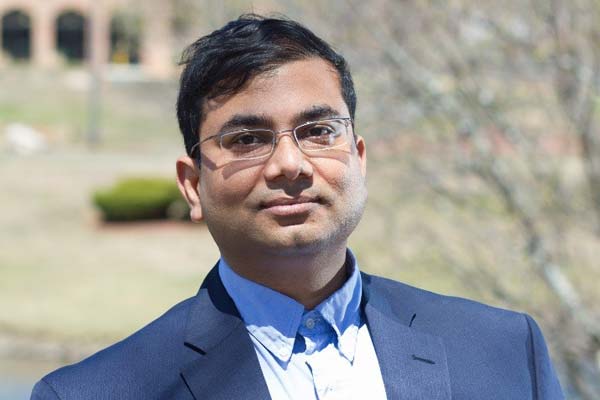
Rajesh Mishra
Smart cities need smarter network
, January 16, 2018
By Rajesh Mishra
Smart cities are no longer just a fantasy of science fiction or an interesting research project. All pervasive deployment of devices, sensors, and broadband promises to fundamentally transform the lives of average urban citizens much sooner than we envision.
Possibilities of smart cities are virtually limitless. Public safety, for instance, can be entirely transformed. High-definition surveillance cameras can record real-time images for better security. But more so, LTE-based broadband can be used to provide instant connectivity for first responders in an unfortunate event of a natural disaster. Not just public safety, other sectors including healthcare, transport and waste management, amongst others stand to benefit tremendously as part of smart city deployment.
Tangible and far-reaching benefits are the key reason why smart cities projects are picking up the pace in all parts of the world.
A smart city network comprises millions of devices and sensors spread across the city that collect data on different aspects of city life, including weather, traffic, energy consumption, carbon footprint and more. This data is then collected and analysed to gain insights and forecast for future. It promises to transform the quality of urban life and it potentially can change the way we live and work.
Communications networks form the foundation of these smart cities. Smart city demands ubiquitous coverage, which can meet the capacity needs of an always connected and always on-demand network. Seamless, end-to-end connectivity is a crucial enabler for all aspects of smart cities. The potential of smart cities can be realised only with a high-speed, reliable and high capacity telecom networks.
It is also a massive opportunity for the service providers to go beyond their role as traditional data pipes. Citizens would be using digital platforms to avail a number of services and to conduct various day-to-day activities, leading to enhanced data consumption. High-end applications, such as connected vehicles and cameras, will further drive consumption. Clearly, it is a significant business opportunity for the service providers.
From fixed-line, cellular to Wi-Fi, most of the communications services providers (CSPs) manage more than one technology network, and this skill can be instrumental in maintaining a smart city network since it will be a collection of many small networks, working in perfect synchronization for overall efficiency.
It is a significant business opportunity for the service providers, but they need a robust and resilient network that will be able to provide high speeds and low latency demanded by the various use cases and applications of a smart city. A number of smart city applications, such as connected cars and smart health, demand extremely low latency. Besides, the telcos would also need to manage the humongous amount of data generated by people and things in a smart city era. Gartner predicts 8.4 billion connected things by 2020, which is sure to add to the signalling challenge of the service providers.
A traditional network is monolithic and is incapable of addressing the requirements of a smart city and the Internet of Things (IoT). The existing networks cannot deal with the huge data consumption or low latency requirements of a number of applications and use cases of smart city. The service providers need to add agility and flexibility in their networks to deal with the requirements of the smart city.
Virtualization is key to a smart city
The service providers can benefit from the implementation of virtualization technologies, such as Software Defined Networking (SDN) and Network Functions Virtualization (NFV). An open and a flexible architecture that is also programmable, automated and interoperable is prerequisite for a network to connect millions of sensors and devices.
SDN allows network programmability and enables managers to oversee all the services from a single control plane. The technology can be used to create different network slices for various services, allowing a single physical network to support a wide range of services. This approach also allows prioritizing of the services, which is going to be key to any smart city deployment. For instance, services required by ambulances or first responders need to be prioritized and demand the highest level of quality, in comparison with the requirement of a connected bus or smart grid. It enables the launch of newer and innovative services faster to cater to the changing demands of the industry.
SDN and NFV together bring down the hardware and space requirements to deploy network functions. The key advantage is that it brings down the cost and at the same time makes the network applications easy to upgrade with the help of software.
The Middle East region is at the forefront of Smart City developments. Smart Dubai 2021 is an ambitious project launched by the Government to provide a safer, sustainable and a more efficient administered urban life to the people. Dubai’s smart city initiatives aim to improve the quality of life of its people by “embracing innovation, and making Dubai more efficient, seamless, safe and delivering an enriched city experience through smart technology.”
Dubai was one of the first cities to realise the potential of smart city. The emirate is already extensively using innovative technological concepts, like Dubai Police App and use of Google Glass to identify road users having warrants against them. However, as technology becomes pervasive, the service providers would be required to upgrade the networks to be better able to meet the future challenges.
Smart cities offer a tremendous opportunity to the service providers, but they need to add agility and flexibility to their networks. They will do well to incorporate virtualization into their networks to take full advantage of the enormous potential of smart cities.
* Rajesh Mishra is president and CTO of Parallel Wireless







